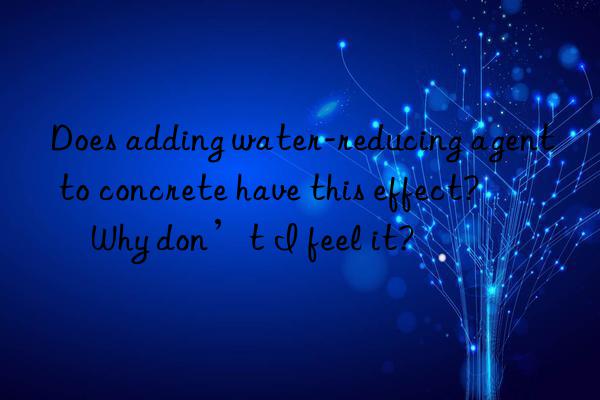
1. Without changing the ratio of various raw materials, adding high-efficiency concrete water-reducing agent will not change the strength of concrete, and at the same time, it can greatly improve the rheology and strength of concrete. Plasticity allows concrete construction to be carried out by self-flowing, pumping, and vibration-free methods, which increases construction speed and reduces construction energy consumption.
2. Without changing the ratio of various raw materials (excluding water) and the slump of concrete, reducing the amount of water can greatly improve the strength of concrete. The strength, early strength and late strength are respectively 60% and 20% higher than that of concrete without water-reducing agent. By reducing water, high-strength concrete with C100 grade can be poured.
3. Without changing the ratio of various raw materials (except cement) and the strength of concrete, the amount of cement can be reduced and 0.2% of cement mass can be added. ~0.5% concrete water reducing agent can save more than 15~30% of the cement amount.
4. Adding high-efficiency concrete water-reducing admixture can more than double the life of concrete, even if the normal service life of the building is more than doubled.
In concrete construction, water-reducing admixture is only used as an admixture. Generally, the powder dosage is 0.5 to 1.5% of the cement dosage, and the liquid dosage is 1.5~3% of cement dosage.
Water reduction Water reduction, as the name suggests, means reducing the amount of water used.
Simply speaking, water-reducing agent has the functions of superplasticizing, water-reducing, and strengthening cement concrete. It can improve various performance indicators of concrete and improve working performance.
General water-reducing agents have obvious water-reducing and dispersing effects. The water-reducing rate is 14% to 30%, which can improve the water-cement ratio under low water-cement ratio conditions. Fluidity of cement slurry and concrete mixture. When the water-cement ratio remains unchanged, the workability and water retention of concrete can be greatly improved; on the premise of maintaining the same strength and slump as the benchmark concrete, cement can be saved, the project cost can be reduced, and the project quality can be improved...
It refers to the ability to reduce the amount of mixing water and increase the strength of concrete when the workability and cement dosage remain unchanged; or when the workability and strength remain unchanged. Admixtures that save cement usage under changing conditions.
According to its water-reducing and strengthening capabilities, it is divided into ordinary water-reducing agents (also known as plasticizers) and high-efficiency water-reducing agents (also known as superplasticizers) ), and are divided into first-class products and qualified products respectively.
According to the composition materials, they are divided into: (1) water-based sulfonates; (2) polycyclic aromatic salts; (3) water-soluble resin sulfonates acid salts.
Ordinary water reducing agent should be used for concrete construction where the daily minimum temperature is above 5℃. High-efficiency water-reducing admixtures are suitable for concrete construction where the daily minimum temperature is above 0°C, and are suitable for preparing high-fluidity concrete, high-strength concrete and steam-cured concrete.
</p



 微信扫一扫打赏
微信扫一扫打赏
